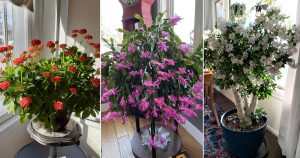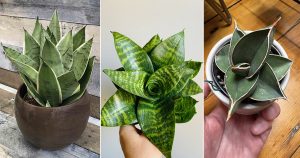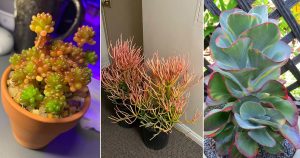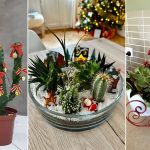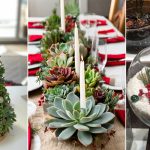Large and deep pots do not always equal quick and healthy plant growth! Check out the best succulents that grow faster in shallow containers!
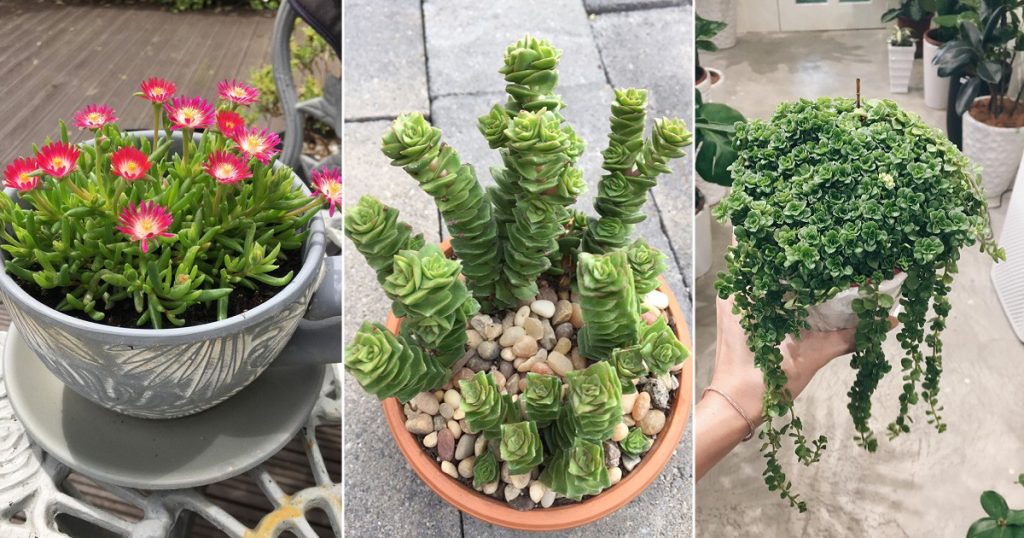
Pot depth plays a vital role in the survival of any container plant. Some do well in large pots while others can fit in tiny ones and do just as well! If you’re curious about succulents that cannot only thrive in shallow pots but also grow rapidly in them, this article is for you!
Succulents That Grow Faster in Shallow Containers
But wait, why do some succulents actually prefer shallow pots? It’s because many of them naturally grow in rocky crevices or shallow soils where water drains away quickly. Mimicking this environment helps the plant grow faster and healthier, without the stress of overwatering or poor airflow.
1. Mexican Snowball
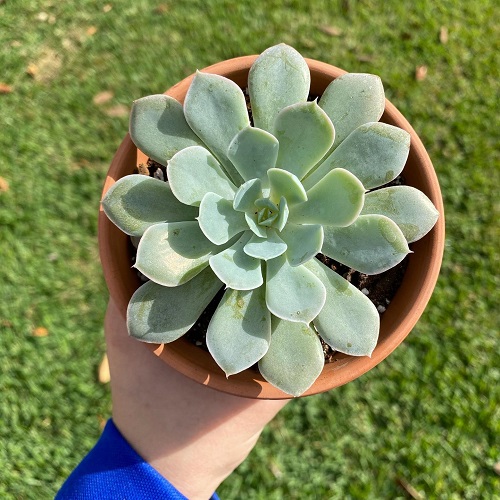
Botanical Name: Echeveria elegans
The Mexican Snowball is a cool perennial succulent known for its blue-green rosette-shaped mounds. To help it grow its colorful leaves quicker, use a shallow pot. That’s because its roots stay close to the soil surface and don’t like too much water, which deep pots often cause.
Along with the shallow pot, don’t forget to expose it to bright sunlight, as this helps with the compact form and keeping the plant disease-free.
2. Ghost Plant
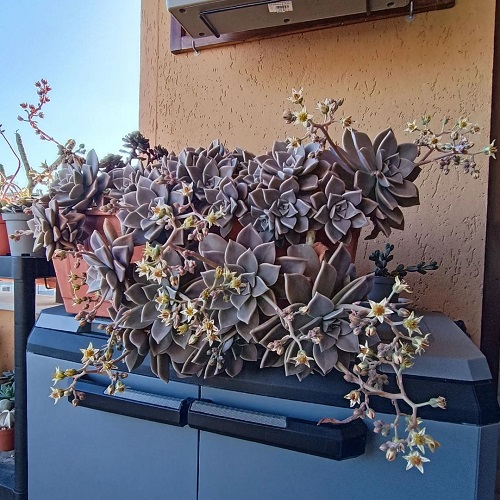
Botanical Name: Graptopetalum paraguayense
Ghost Plant gets its name due to its pale gray leaves that look like something out of a horror movie set. But do you know what this plant is scared of? Deep pots! The ghost plant has horizontally spreading roots, which means it gets most of its water from the upper layers of the soil. That’s why a wide, shallow pot works best.
This low-maintenance plant is drought-tolerant, deer-resistant, and can even survive in temperatures as low as -15 °C!
And the bonus is it changes colors based on sun exposure—turning slightly pink or yellowish in bright light.
3. Caucasian Stonecrop
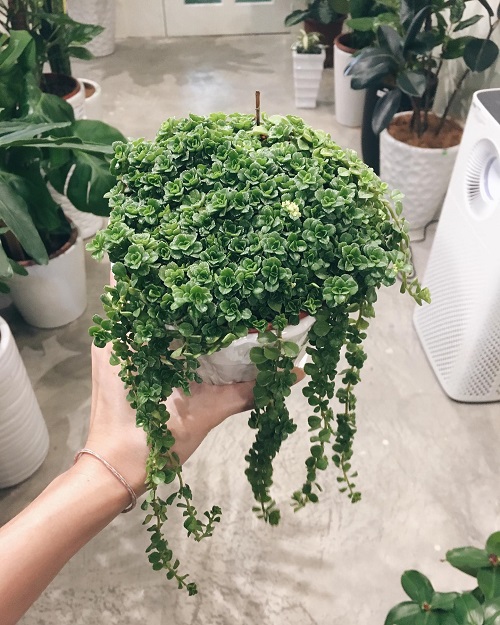
Botanical Name: Phedimus spurius
In the wild, the Caucasian stonecrop exhibits a creeping growth pattern and thrives in shallow sandy soil types. To grow it rapidly indoors, you must mimic its original environmental conditions. For this, use shallow pots to maintain its low-growing form and also avoid soggy roots.
Come spring, it blooms with bright star-shaped flowers that pop against its gold-green leaves—perfect for brightening up dull corners.
For a quicker spread, you can even divide the plant and place the cuttings directly into a shallow tray of soil—they’ll root effortlessly!
4. Hens and Chicks
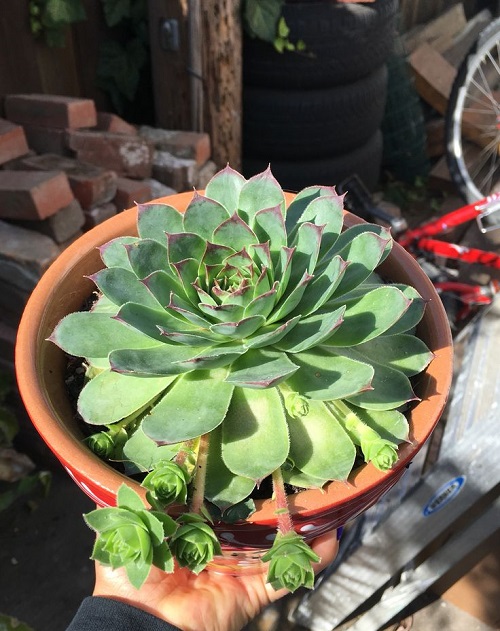
Botanical Name: Sempervivum tectorum
Hens and Chicks naturally grow faster in very arid conditions. They prefer infrequent watering and dry soil. Shallow pots help regulate the soil dryness as low amounts of water remain in them. Waterlogged soil can lead to root rot and eventually kill the plant.
You can identify these iconic succulents by their thick, pointed leaves that come in many colors and their ability to produce offsets close to the mother plant to form a dense family!
Tip: Use a terracotta pot to allow even faster drying of soil—perfect for this shallow-rooted grower.
5. Jade Plant
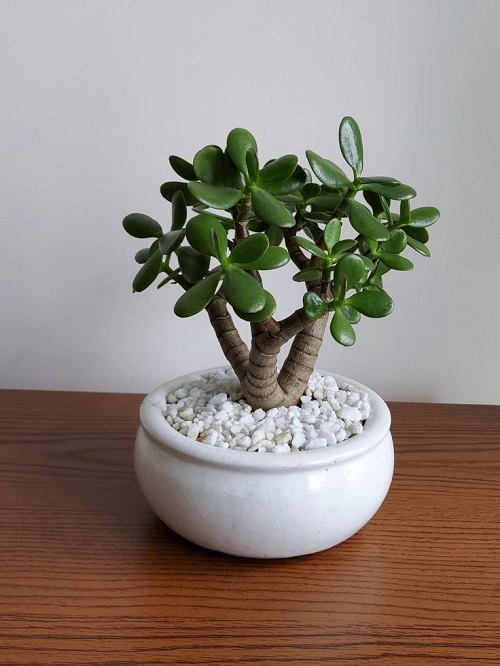
Botanical Name: Crassula ovata
Do you also love the smooth, fleshy, egg-shaped leaves of the jade plant? But do you know, just like many others on this list, this tropical succulent also has shallow roots. It also does not need a lot of soil to grow and often succumbs to overwatering. Therefore, shallow pots are the way to go as they provide the perfect growth conditions.
To get the most out of this succulent, couple the shallow pot with bright indirect light and average room temperatures.
Also, avoid switching pots frequently—the Jade Plant prefers to stay a little root-bound for better growth and flowering.
6. Panda Plant
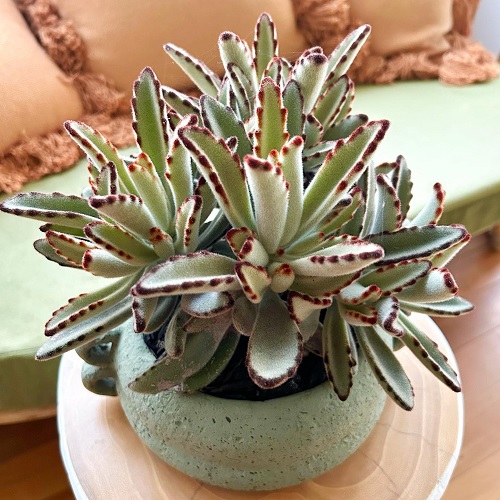
Botanical Name: Kalanchoe tomentosa
Do not be fooled by its large size; the Panda plant also has a shallow and spreading root system that hates soggy soil. This plant also has fuzzy leaves with brown edges, which are prone to fungal attacks that breed in moist conditions. A shallow pot will keep the soil dry and the plant mold-free.
A word of caution, it dislikes high humidity, cold temperatures, and strong light, which scorches its leaves, so grow it in a stable environment and expose it to bright but indirect light for 6 hours a day.
One more thing—don’t mist the leaves. The fuzzy coating traps moisture, and that can cause leaf spots or rot.
7. String of Buttons
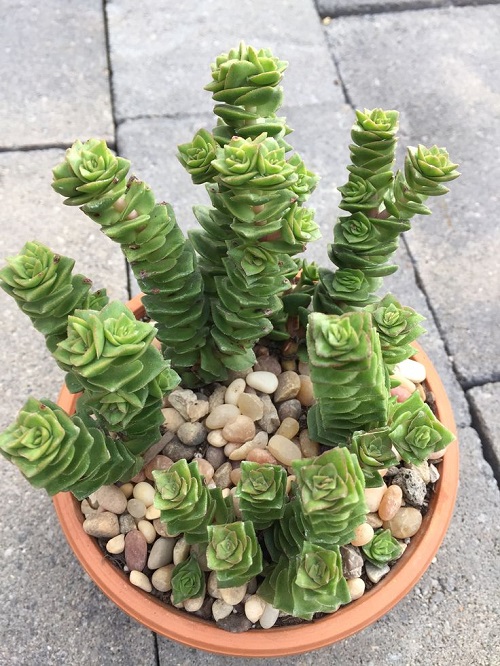
Botanical Name: Crassula perforata
String of Buttons is a close cousin of the jade plant, and similarly grows faster and better in shallow pots since its roots don’t go deep and need good airflow to stay healthy.
In the wild, it is found growing in rocky soil, and hence, you must mimic the porosity while choosing your growing medium and pot size.
Don’t be fooled by its gorgeous tower of triangle-shaped leaves; it is toxic in nature and must be kept away from children and pets.
You can also train this succulent to trail by placing it at the edge of a shallow hanging planter—it looks stunning spilling over!
Caution: Wear gloves and glasses when handling this succulent.
8. Ice Plant
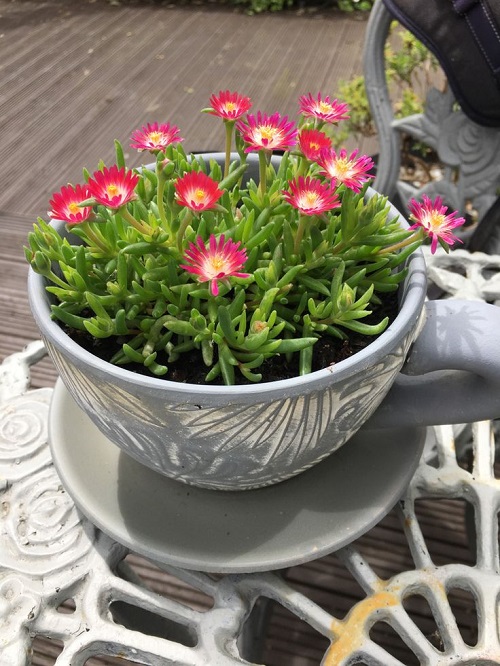
Botanical Name: Delosperma cooperi
If you thought that you would need large pots to get large blooms, the Ice Plant will prove you wrong with its bright, daisy-shaped flowers! Its ability to grow in colder climates sets it apart from most other succulents.
When it comes to container size, shallow pots are the go-to as this plant grows exponentially faster in tiny containers due to its wide-spreading roots.
There is a common misconception that since it is a winter-loving plant, it hates sunlight. This is not true! Expose the plant to 6 hours of full sun and avoid soggy and heavy soils.
For best flowering, use a potting mix that has sand or pumice added to improve drainage and mimic its native habitat.
Now that you’ve met these fast-growing succulents, why not give them a go in shallow pots? Let us know which one surprised you the most in the comments below!


